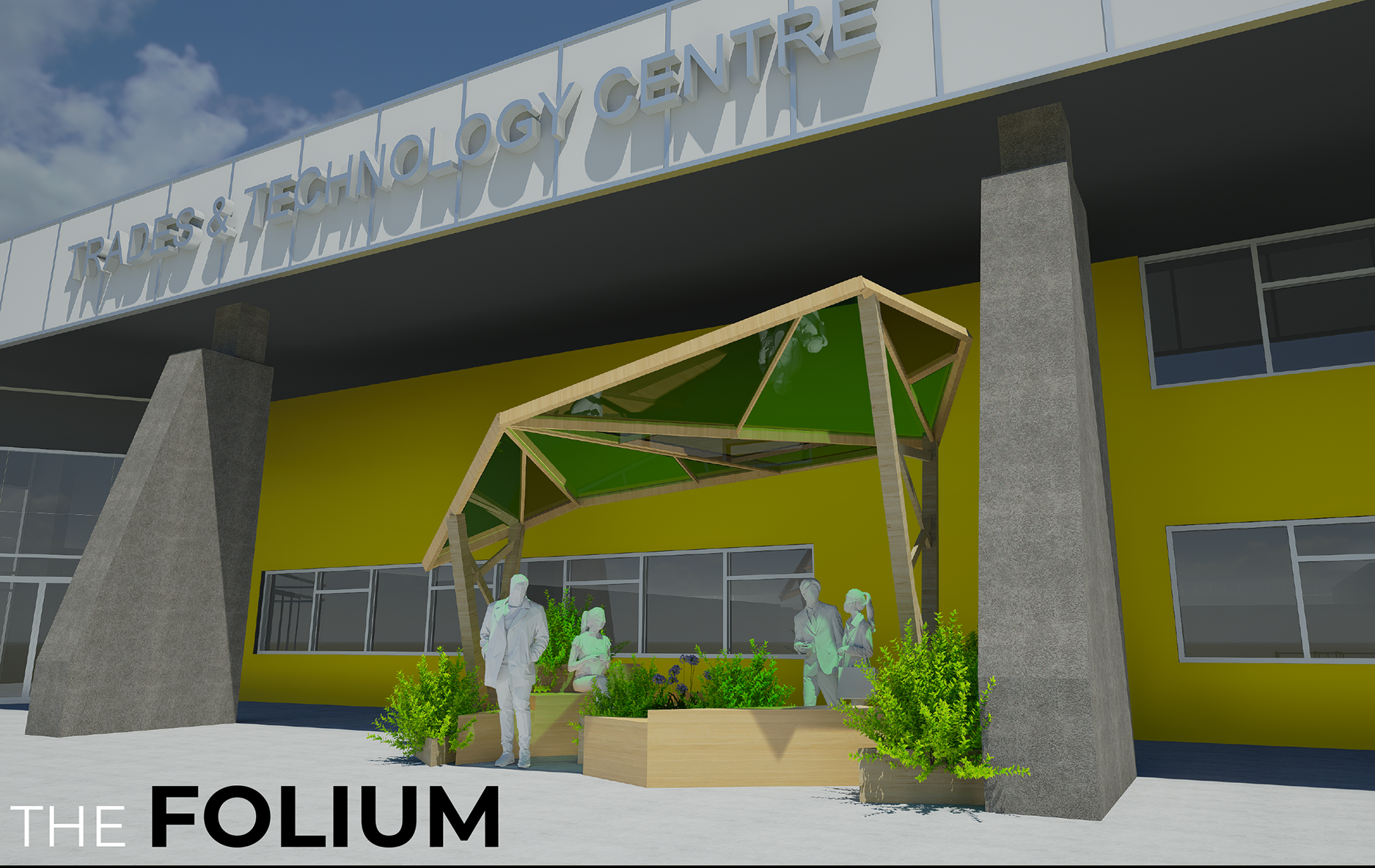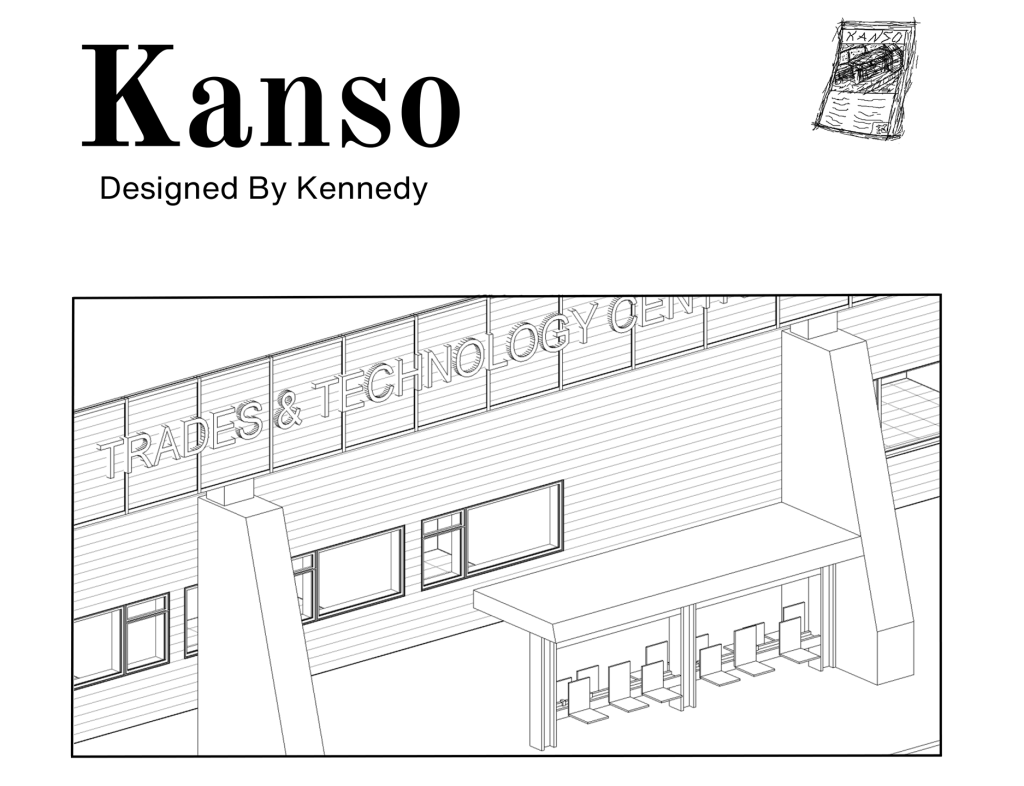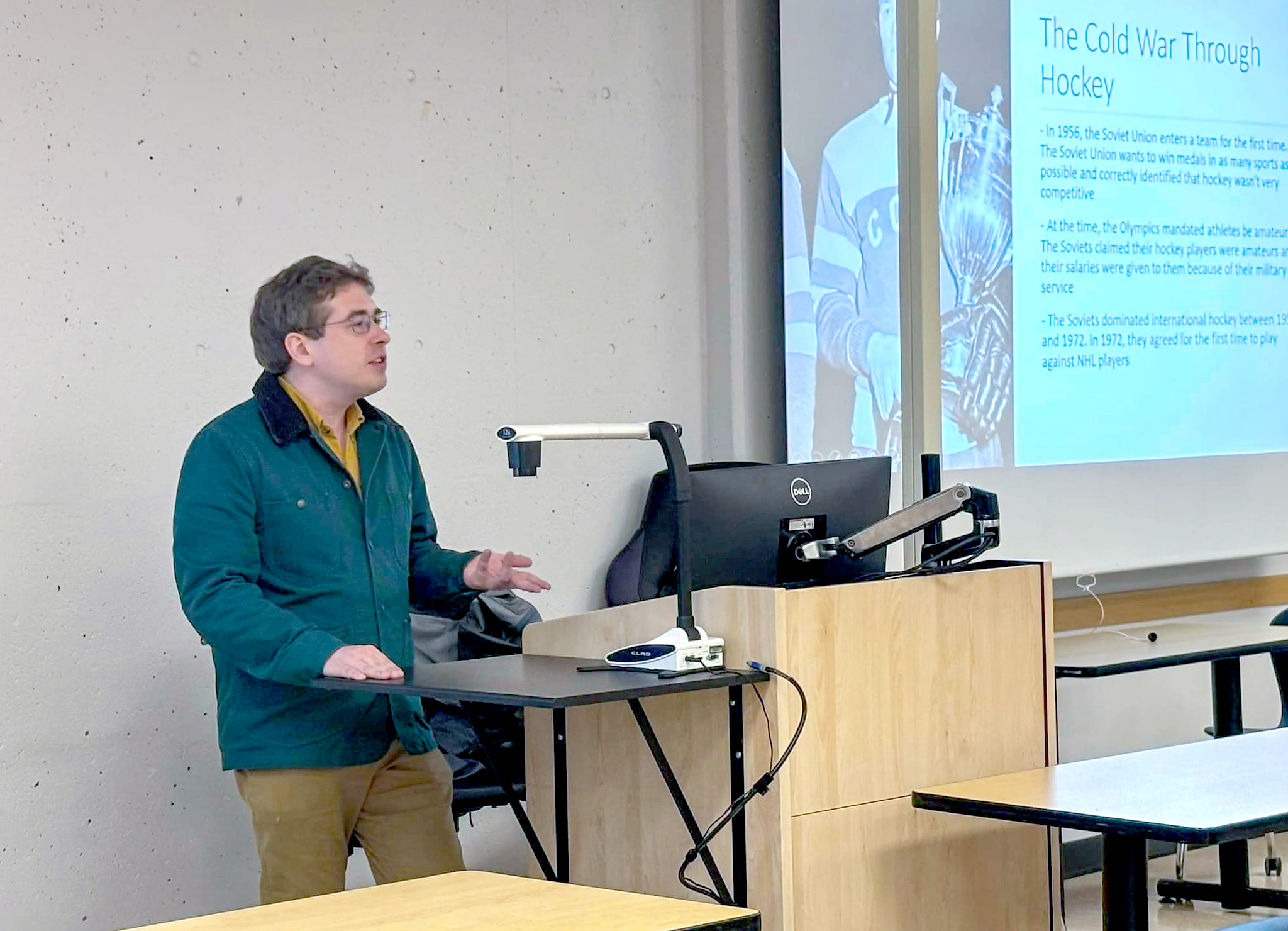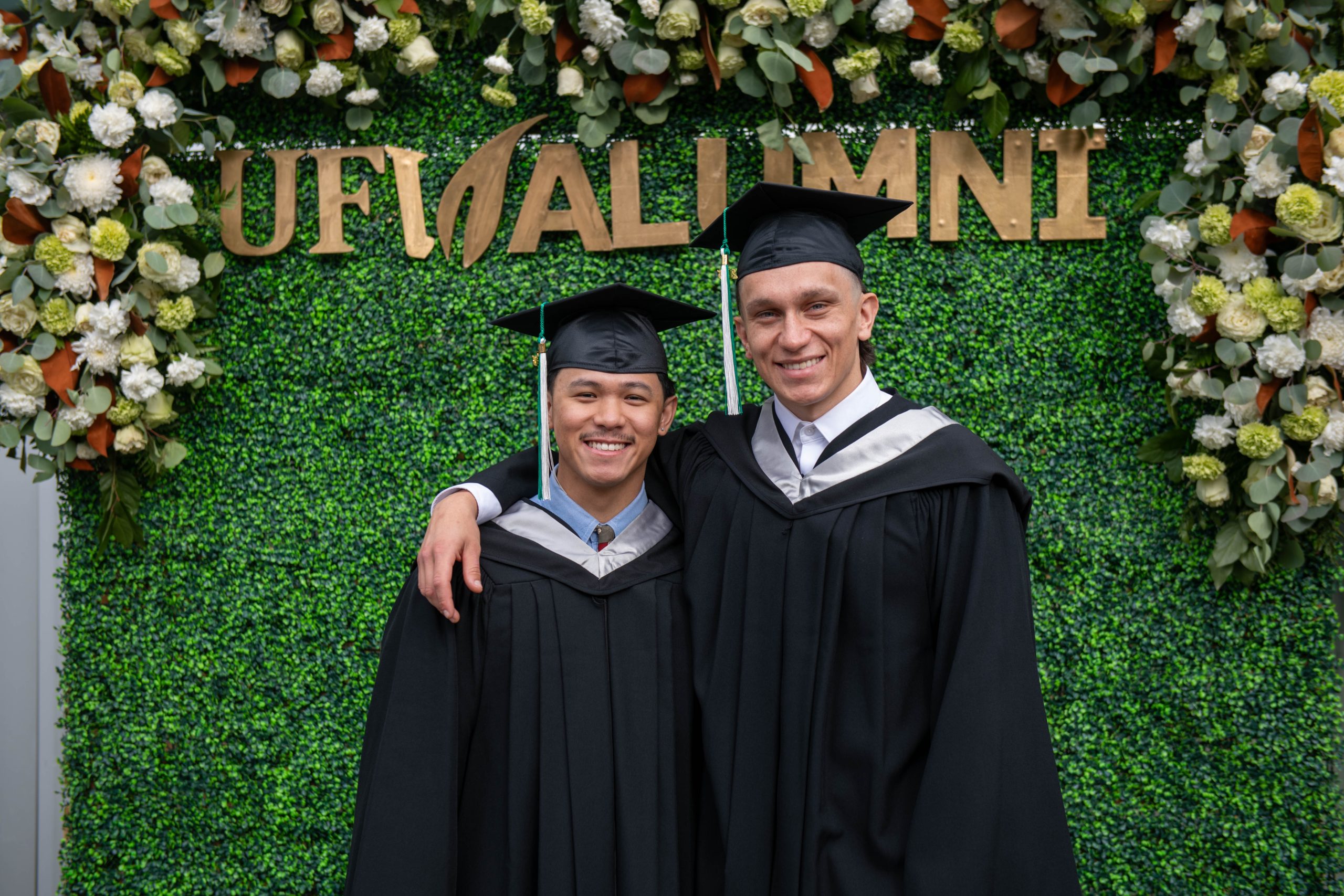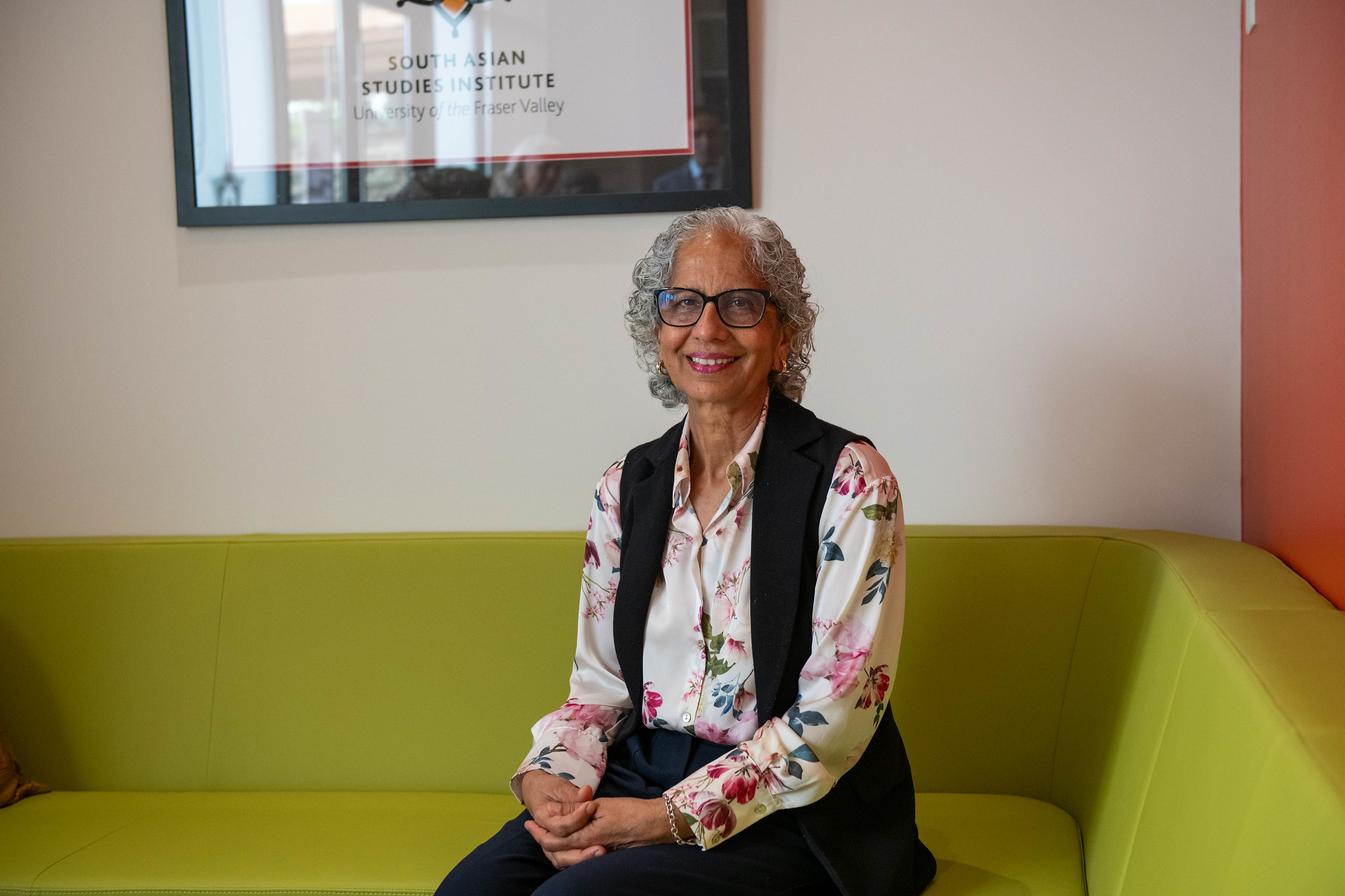Drafting students dream up possibilities to liven up campus bus stop
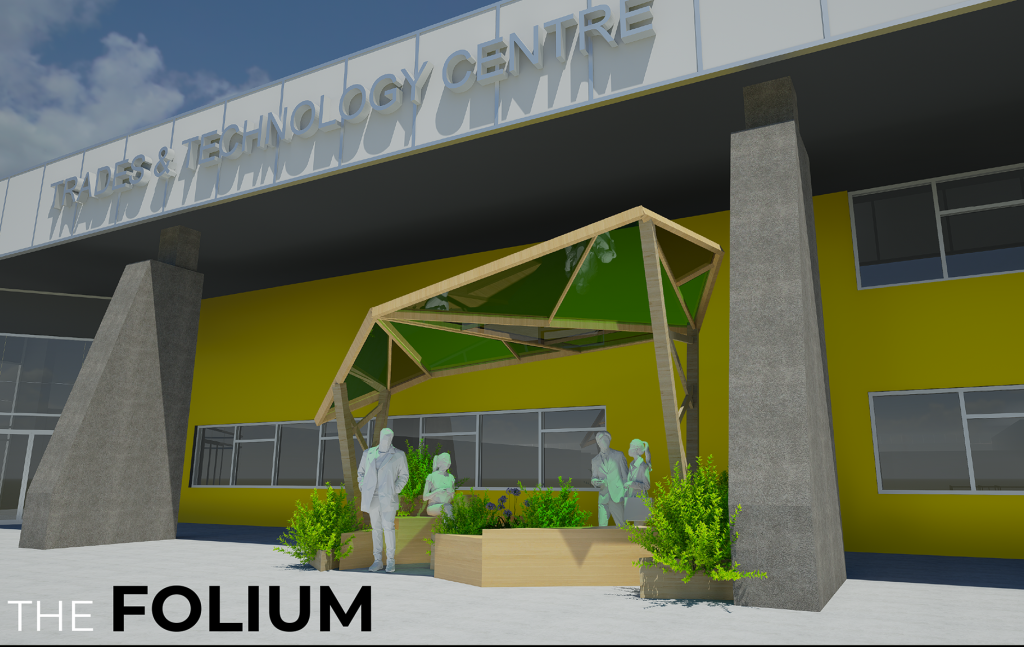
How do you make an unremarkable space interesting? How do you bring life to something people pass by every day without thought?
Those are questions Jesse Reimer posed to UFV’s Architectural Drafting Technician students when he presented Activating Spaces, a concept created by Jesse and his fellow instructor Wes Macaulay. The competition challenged students to look at the bus stop for the Campus Connector shuttle service outside the Trades & Technology Centre (TTC) on the Chilliwack campus and make it more interesting.
“It’s just this big open concrete pad, a very boring spot,” Jesse explains. “We asked our students what they could put there to make it a more desirable place for students to gather.”
While the competition was a valuable exercise for the students, they were aware that it was a simulated exercise that would not result in actual renovations to the transit stop.
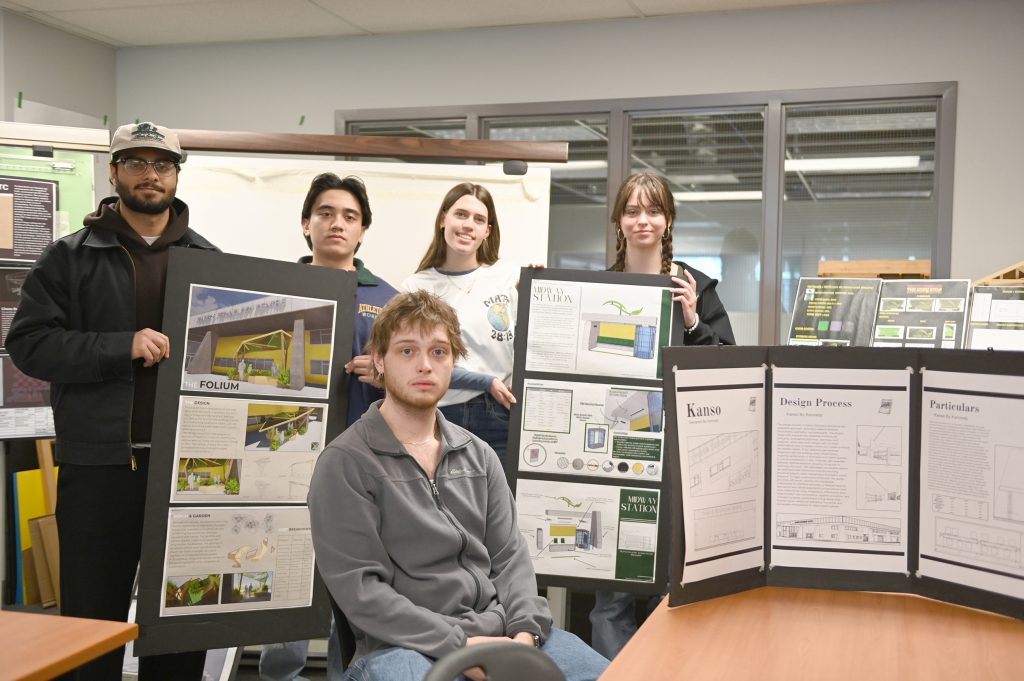
Proposals were expected to be welcoming and efficient while accommodating transit needs, offering shelter, integrating with the surrounding campus environment, and reflecting UFV’s commitment to sustainability, innovation, and community building.
Kaiden Spenst thought of Japanese architecture, which he described as light and airy. He pictured the simplicity of bus stops in Kyoto and considered how to seamlessly combine that look with the rugged industrial style of the TTC. With his submission, Kanso, he aimed for a perfect balance between functionality, aesthetics, and practicality.
In the eyes of a jury comprised of faculty and industry reps, he succeeded.
“To see thought take form was quietly moving, a soft reveal to a part of me that usually stays in the background” says Kaiden.
Students were charged with producing three 11×17-inch presentation boards that included renderings, sketches, diagrams, and key visualizations of the proposed design. They needed to include details about material selection and cost, and sustainability strategies. They were also required to write a 250–500-word description explaining their design.
Projects were first presented to the public at the TTC open house, where a design by Michael Aliniabon and Gurmo Gakhal, inspired by the leaf in the UFV logo, proved to be most popular in a public vote.
“The design draws from the tangram, a symbol of integrity, inclusivity, community, and excellence,” they wrote in their submission. “These are core values central to UFV. The canopy over the bus stop, shaped like a leaf, is composed entirely of straight-edged tangram-inspired forms.”
Where Kaiden looked to seamlessly blend styles, Michael says they embraced the contrast between organic and industrial.
“We had three weeks to get everything done, and it took a week and a half to find our design,” he notes. “Our first designs used curves and didn’t look good. But once we found the tangram and started incorporating straight edges, it turned out pretty well.”
The presentation to the jury was an eye opener. Kaiden shares that he spent several hours working with a peer to carefully plan his presentation. The preparation proved to be worthwhile.
“I felt a strong connection with the audience throughout my presentation, as their engagement was clear. Based on the feedback I received afterward, I believe it was both well-delivered and well-presented.”
Jesse says that may have been the most valuable part of the competition. It’s one thing to design nice things, but architectural clients demand you justify your choices.
“Accessibility, cost, or appropriateness might be important factors for deciding which design they move forward with,” he says. “Our jury process was designed to mimic that exactly, putting our students on the spot to answer questions and explain their vision.”
Jesse says the inaugural Activating Spaces competition went so well, he’s wanting to bring it back.
“Whether we use this same location, or we find other places like an atrium or a courtyard or an interior space — if a faculty member says they don’t use the space we’ll have our students figure out how to activate it.”


